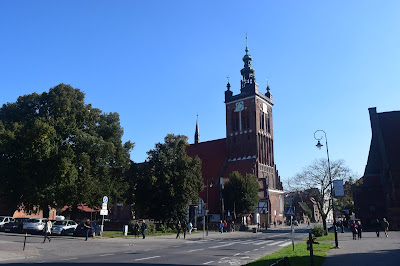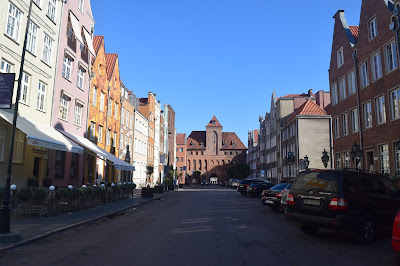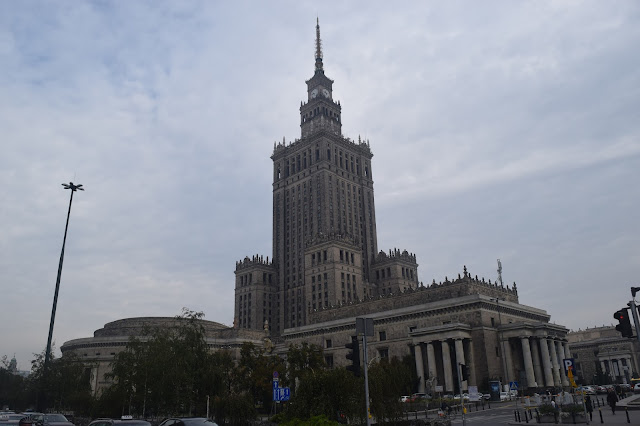Gdansk, Poland: The Strategic Former Free State Part 1
The largest Polish city
along the Baltic city, Gdańsk is the center of the Kashubians, who speaks the
remnant of the old Pomeranian language. This uniqueness is increased by its
history of self-rule to maintain the Polish corridor that gives access the
German-controlled East Prussia and Poland as the Free City of Danzig. After the
First World War and the defeat of the Central Powers, the United States of
America assured the creation of the Polish state access to the Baltic Sea through
Pomerelia where Gdańsk situated. This makes Gdańsk an important trading port of
the Polish state. This economic and historic significance draws tourists,
merchants and immigrants to the city port. This is the first part of my visit.
Click here for the second part.
1.
Gdańsk
Główny
This Gdansk
railway station, which serves as an access to the Pomeralia. It was called the
Danzig Main Station, reflecting German influence in the city. The station is
pattern from the design of Colmar Station in Alsace, France.
2.
Fontanna na
placu im. Jana Heweliusza
This
fountain is named “All the colors of the water.” It commemorates the
construction of the water saniation facilities in the city. It represents the
water cascades.
3.
Kościół św.
Katarzyny
Church of
Sts. Catherine is the oldest parish church of the Old Town in Gdansk. The
church was destroyed during the Second World War and a fire after the turn of
the millennium.
4.
Kanał Raduni
The Radunia
Channel flows into one of the dead tributary of the Vistula River, which has
been a landmark for the Pomeranian province. It was built by the Teutonic
Knights.
5.
Baszta Jacek
Tower Jacek
is a historical tower within the medieval fortifications in the city. The brick
building is octagonal and is quite tall to allow observation of the Old Town to
prevent attacks.
6.
Hala Targowa
Gdańsk
The Market
Hall is also known as Dominican square after it was the location of the
Dominican monastery was destroyed during he siege of the Russian and Prussians.
7.
Świętego
Ducha
The
Pentecost Street in the oldest mentioned street in written history in Gdansk. There
are many houses on the street mostly rebuilt after the Second World War.
8.
Kaplica
Królewska
The Royal
Chapel in Gdansk was built by Catholics with the help of a medieval Polish
king. It became the temporary chapel when the St. Mary’s Church was in the
hands of Protestants during the Reformation years.
9.
Bazylika
Mariacka Wniebowzięcia
St. Mary’s
Church is a Roman Catholic church is one of the largest brick church in the
world. During the Reformation, most residents of Danzig embraced Lutheranism,
making the church was one of the largest Protestant church in the world.
10. Fontanna Czterech Kwartałow
The fountain
is divided into four parts so this is the reason why it is called the Fountain
of Four Quarters. It represents wide, high, fisheries and kogi. The glasses are
in different colors, which looks beautiful at dusk.
11. Szeroka
The Broad
Street is one of the main street in the Old Town. It ends on the Crane, which
was heavily damaged during the war. It was immediately reconstructed
thereafter.
12. Kościół św. Jana
The Gothic
church of Sts. John is a parish in the Old Town in Gdansk. It is also used now
as a cultural center with a professional stage and sound system.
13. Brama Świętojańska
The Świętojańska
Gate was a hotel in the 14th century, with a view on the riverside.
During the Second World War, the gate was destroyed and restored thereafter.
14. Tramwaj wodny-F5 Motława
This is the
waterways in Gdansk. This is a popular tourist destination in Gdansk. These
waterways are connected to the Moltawa River. The river flows across Gdansk,
which derived its named from the Kashubian translation of the old name, Gdania.
15. Statek-muzeum "Sołdek" Ossział Narodowego
The ship SS
Soldek was a coal and ore freighter. It was the first ship built in Poland
after the Second World War. It is now preserved as a museum ship in the city.
16. Narodowe Muzeum Morskie w Gdańsku
This is a
national cultural institution to preserve monuments related to shipping,
boatbuilding and fisheries. Few of their exhibitions are Dar Pomorza in Gdynia,
Crane and SS Soldek in Gdansk.
The strategic and
navigational location of Gdansk makes it a primary shipbuilding port on the
Baltic coast. It is now the greatest advantage of the city port, which gives also the same reasons why tourists flock in
one the largest cities in the Polish state. The same degree of significance has
also been considered during the period when Gdansk was a free state, being sandwiched
between the Polish corridor and German-controlled Eastern Prussia before the
start of the First World War. This clearly reflects the extreme historical
significance of this city in the world stage until the present time.



























Comments
Post a Comment